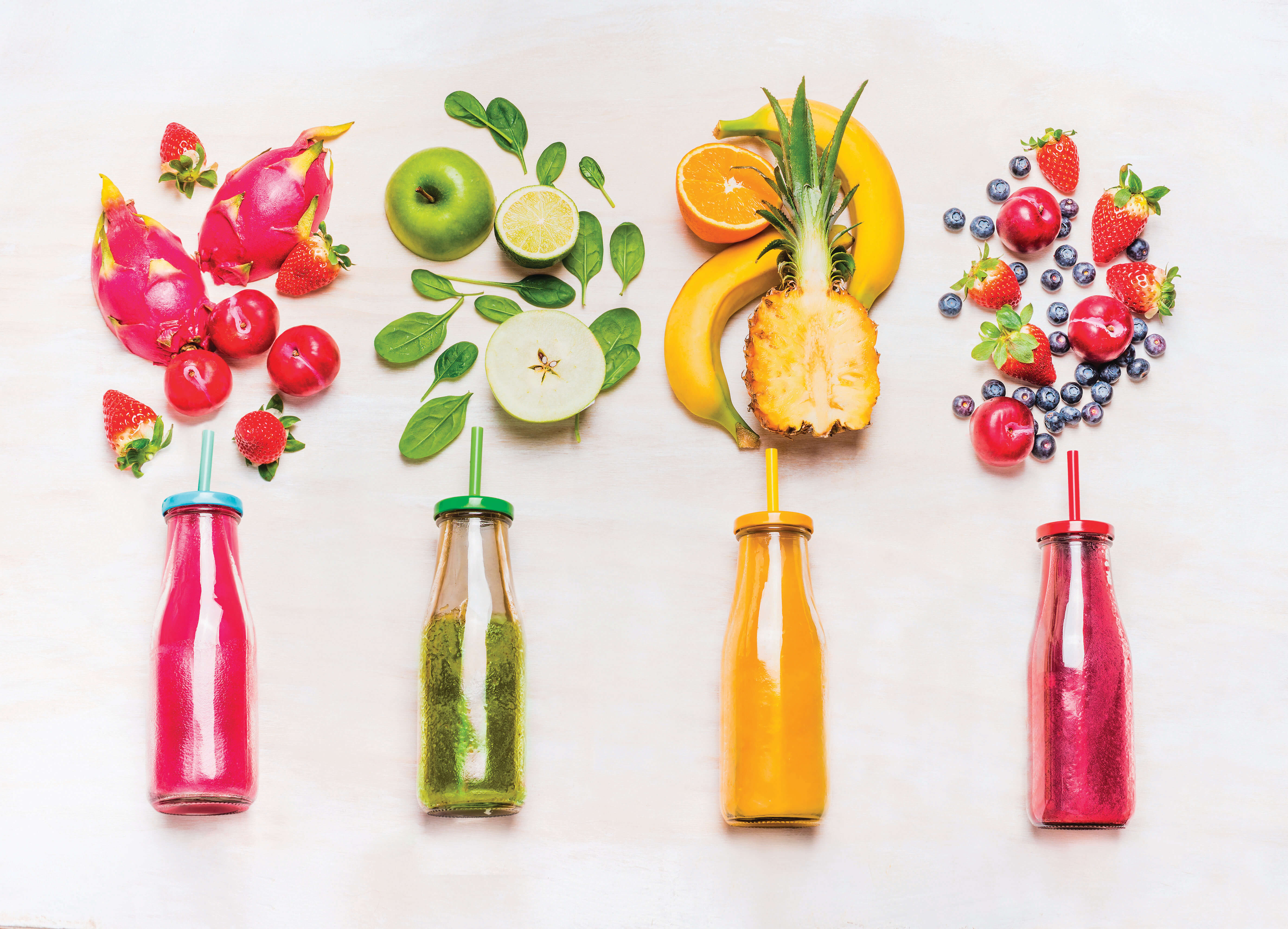Once in the realm of ‘health foodies,’ juices and smoothies have gone mainstream. No wonder—delicious, nutritious, and portable, they are the perfect on-the-go food for everyone. Or are they? We asked Nature’s Fare Markets’ holistic nutritionist Lisa Kilgour to talk to us about the upside—and the downside—of these popular drinks.
NFM: First, can you define what a juice and a smoothie are?
LK: Juices have had the liquid separated from the fibre of fruits or vegetables. Smoothies are simply a blend of fruits or vegetables, with the fibre intact.
NFM: What’s the difference to our bodies?
LK: It’s all about the speed of nutrient uptake. Foods need digestive power for us to get the nutrients out of them. In a juice, because the fibre has been removed and the cell walls broken down, our bodies take in the nutrients and the sugars quickly, which can affect our blood sugar. Because the fibre is intact in smoothies, the uptake of nutrients and sugars is slower.
NFM: So which is better?
LK: Well, they are just different—and there’s a time and a place for both of them. It depends on your body, and why and what you want to blend or juice.
Juices are especially good for people with a chronic health or digestive issue where the body needs lots and lots of nutrients in a way that takes less energy. I don’t recommend juicing every day for most people because of the faster uptake of food energy.
Every healthy person can benefit from a smoothie because it requires more digestion, and releases that food energy slower. If a smoothie doesn’t tide you over long, it’s a good sign that a meal would have been a better option.
NFM: So smoothies aren’t good meal replacements?
LK: Well, having a smoothie at lunch is better than not eating at all but it’s not a good meal replacement. It’s important to know that the motion of chewing is very important because it sends a signal to your stomach to start the digestive process. Until the invention of blenders, juicers, and food processors, people never had to digest food without chewing. If people overdo smoothies, they tend to have a lot of bloating and heaviness, and are hungry all the time because their body is expecting water—and thinks it hasn’t eaten yet. Some people feel nauseous for that reason. ‘Chewing’ or swishing your smoothie or juice around in your mouth gets the saliva enzymes going, and makes a huge difference for your digestion.
And cold juices and smoothies are hard on the system. Room temperature is best.
NFM: How would someone know what is better for them?
LK: Not everything is good for everyone. It’s important to be attuned to your body’s wants and needs, to understand what works for each of us, as individuals.
It’s simple: If you juice and feel good, keep doing it. If you don’t, stop—even if you’ve read something somewhere, or it works for someone else.
NFM: Do you drink juices or smoothies?
LK: At first I felt fantastic drinking juices, and then something shifted. After a while, I’d get a high boost of energy, and then crash. Juicing doesn’t usually work for me except when I travel, as my energy output is higher; and when I’m sick, and need more nutrients.
NFM: Do you have a favourite juice or smoothie?
LK: My favourite juice is Calm at Nature’s Fare Bistros. The fennel and apple taste great, and is balancing for my body. My favourite smoothie of all time is peach, strawberry, basil, real vanilla, and bit of honey. Shockingly fantastic.
Drink Dos and Don’ts
- Do use fresh, organic ingredients and no added sugar.
- Do add 1–2 tsp of good quality oil—like olive or coconut oil, full fat yogurt or avocado—to juices and smoothies to slow down the digestion of sugars, and increase the absorbency of fat-soluble antioxidants.
- Do choose a whole food form of protein (yogurt, if you tolerate dairy, or hemp) over a refined protein powder.
- Don’t overdo the fruit—more than one or two at a time will spike your blood sugar.
- Don’t overdo cruciferous vegetables—too much chard, kale, and deep leafy greens can reduce thyroid function.
- Don’t blend too long as heat can affect vitamins and minerals.
This article was published in the July/August issue of The Good Life magaine.

